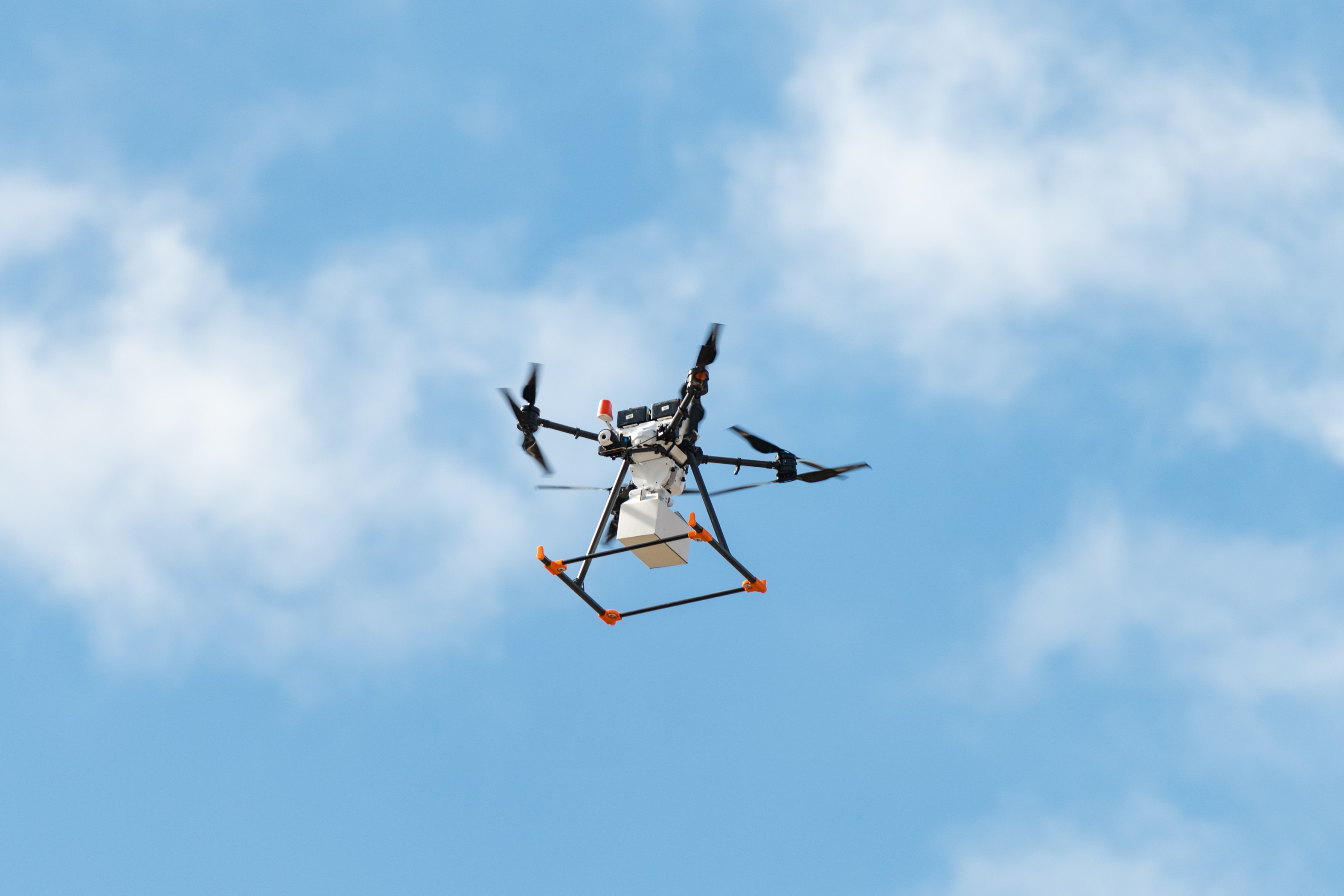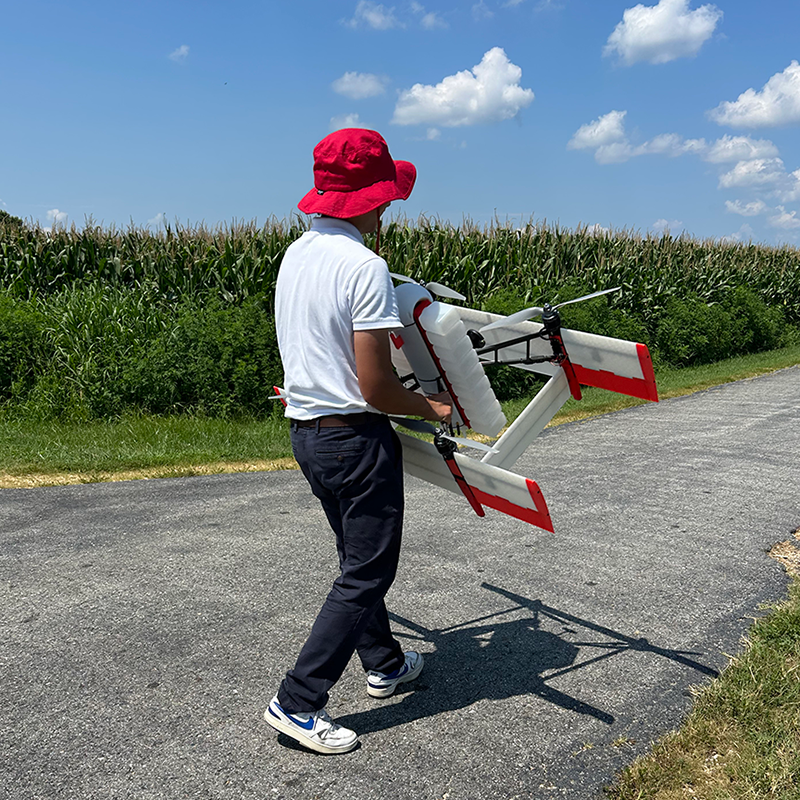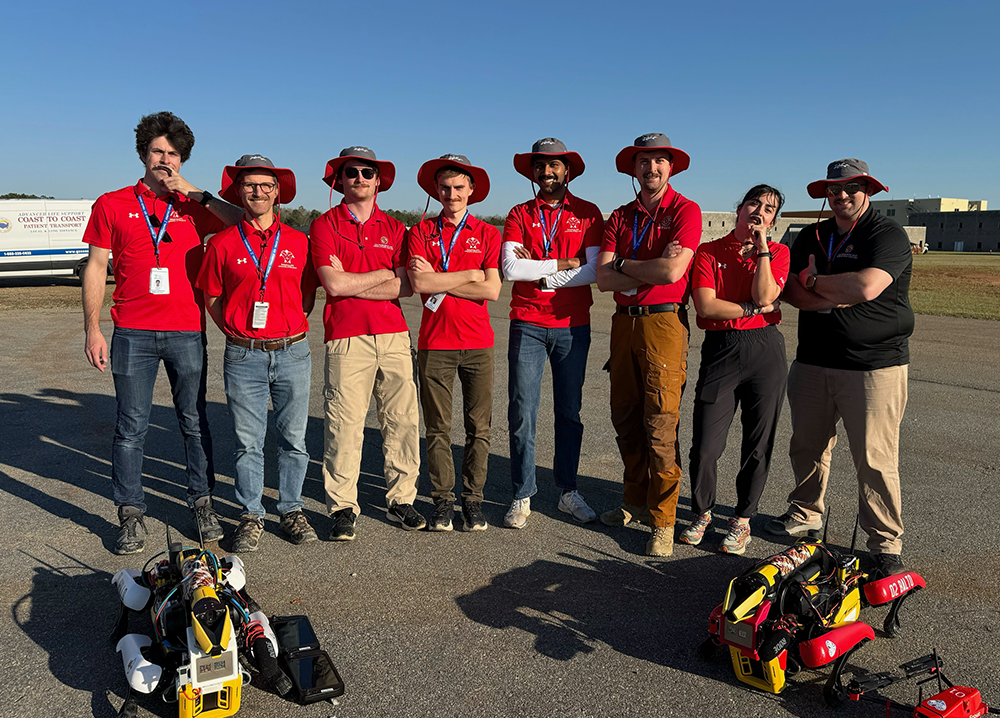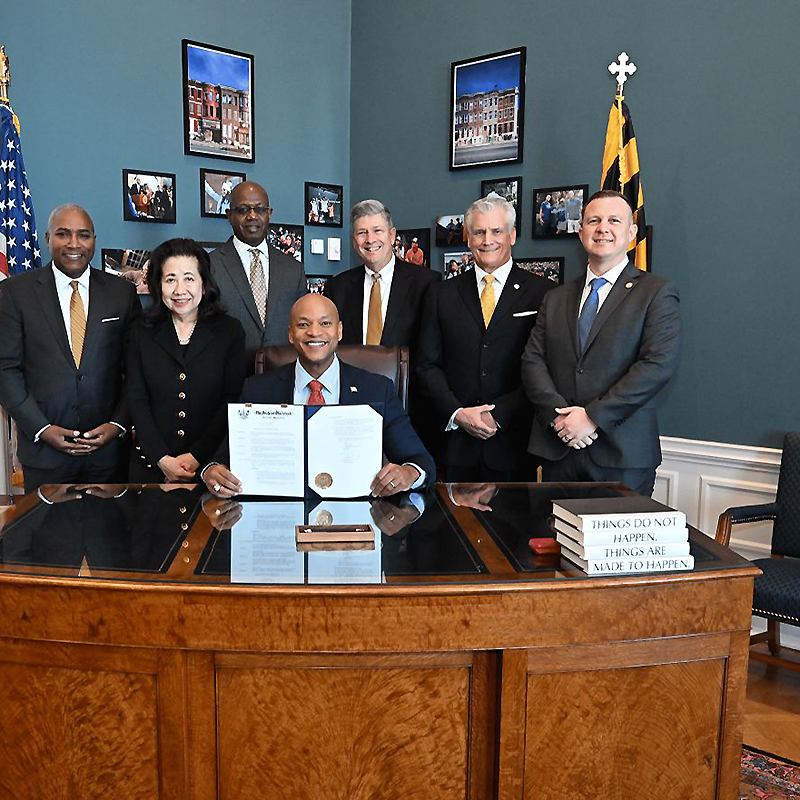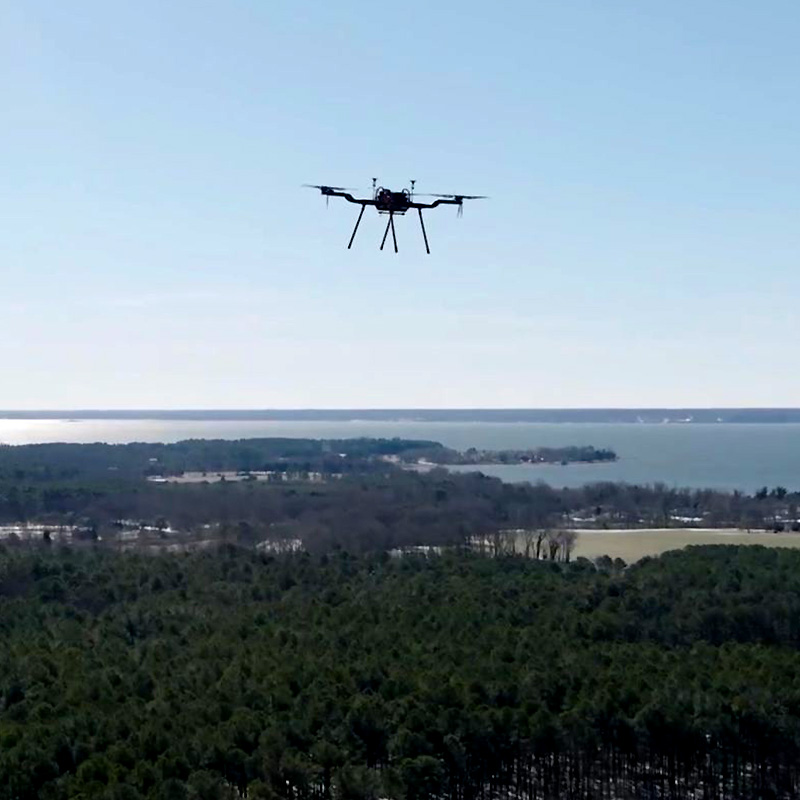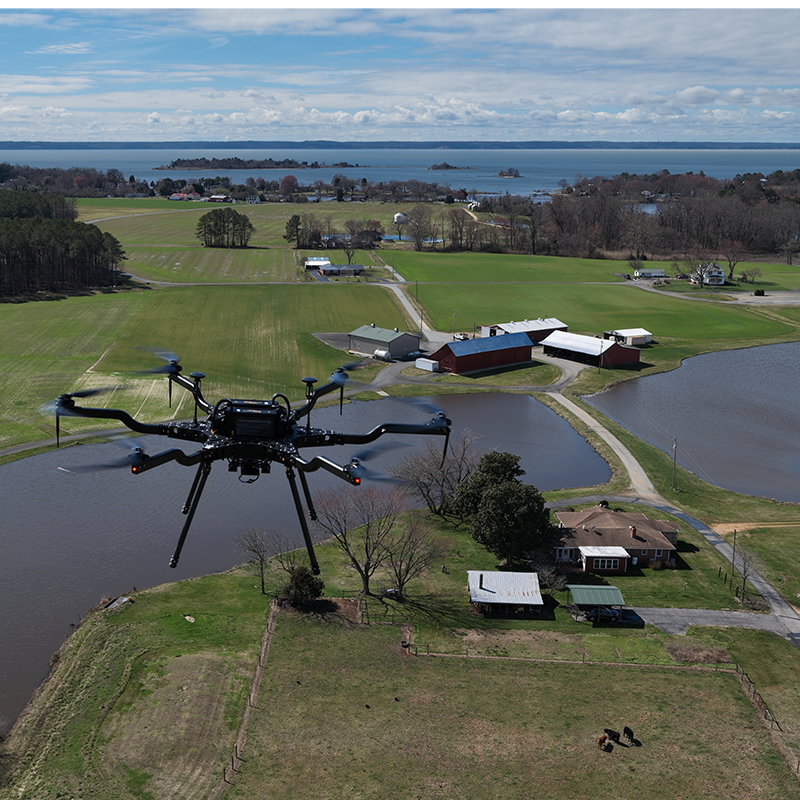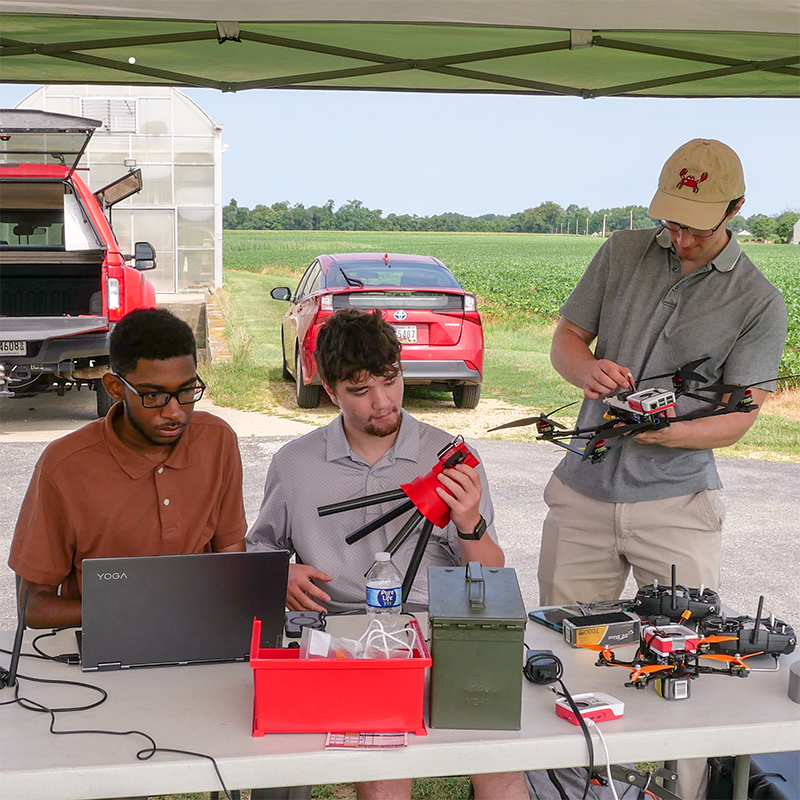News Story
Summer Interns Build Pro-Level Skills at UROC
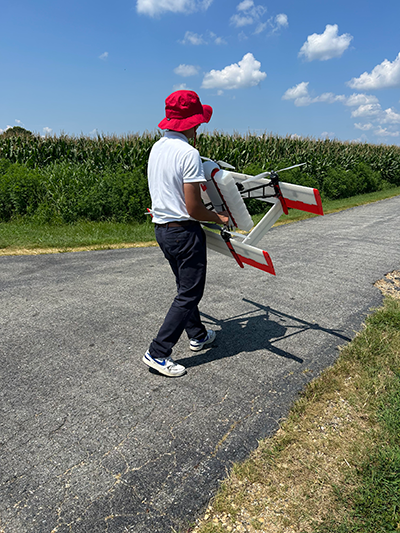
UMD student Steven Kuo spent the summer making improvements to a powerful rotorcraft-biplane combination aircraft used by the Autonomous Micro-Air Vehicle team during Vertical Flight Society competitions. Photo: Mckenzie Crandall.
Three students in the 2025 summer internship program at the University of Maryland’s (UMD) UAS Research and Operations Center (UROC) had the opportunity to plan and execute pioneering projects under the guidance of highly experienced aviation professionals.
Ben Falco, Steven Kuo, and Aryan Verma each spent ten weeks on-site at the UROC hangar in California, Maryland, working on technologically ambitious projects that could help advance the field—and, in Kuo’s case, finessing a competition rotorcraft used by UMD’s Autonomous Micro-air Vehicle (AMAV) team.
Kuo and his teammates have built a “tailsitter” that combines rotary and fixed-wing flight, giving it the advantages of both modalities. Rotors are used for vertical takeoff and landing, thus eliminating the need for a runway. Once airborne, the vehicle flips on its side and becomes a biplane, using its wings instead of the rotors to provide lift.
The aircraft, named Kraken, can reach speeds of up to 100 mph and achieve greater distances than possible with a conventional rotorcraft. Guided during the summer by his mentor, UROC Project Engineer Josh Gaus, Kuo fine-tuned Kraken to achieve greater reliability, especially in autonomous flight. He also added a camera system that will help meet the specific competition requirements, which include dropping water bottles in precise locations.
The flight tests were a highlight of the internship, Kuo said.
“Being in an environment where there are a lot of professionals and seeing how they conduct flight tests has been eye-opening,” he said “I’ve been learning how to flight test at a more advanced level, with test cards and checklists. I’ve also learned that it’s important never to rush.”
“These are things that I couldn’t have learned by myself. Seeing the professionals do it has been rewarding,” he said.
CounterUAS and GPS-denied Indoor Flight
While Kuo was upgrading his team’s competition tailsitter, fellow intern Ben Falco spent the summer experimenting with an interceptor that can chase down a target drone—for instance, one operated by an adversary or rogue user–and prevent it from continuing its flight.
This has been Falco’s third summer as a UROC intern; all three summers, as well as time during the school year, have been focused on developing the interceptor system, including by devising deep reinforcement-based guidance algorithms for autonomous flight, as well as by testing different methods for capturing the target drone. Last year Falco tested the use of a netgun for capture; this summer he equipped the interceptor with a carbon dioxide cannon that shoots out streamers. When the target drone’s rotors get caught in the streamers, it malfunctions and drops to earth. Falco’s mentor is UMD aerospace engineering associate professor Michael Otte.
Ohio State University (OSU) student Aryan Verma, mentored by OSU research scientist Matthew McCrink, was the third intern this year. His focus was on indoor navigation in situations where GPS is denied or unavailable—a capability typically found on costly industrial-drones. Verma’s aim was to achieve similar capabilities using inexpensive, consumer-grade drones.
Gaus, who leads the summer internship program, said participants gain experience and expertise that is typically unavailable in engineering courses, even through electives. The program, he said, is ideal for those who seek to make UAS technology an integral part of their careers.
“Our aim is to give drone-operations-specific knowledge to students who will benefit from that knowledge,” Gaus said. “We also ensure that the students stay within regulations. When they come and do their projects at UROC, we’re able to keep them on the rails so far as safety and regulatory compliance are concerned.”
In addition to their technical accomplishments, UROC interns also learn project management and how to keep their projects on task, with each intern delivering weekly quad chart presentations to the UROC team.
Published August 18, 2025
